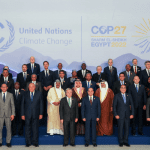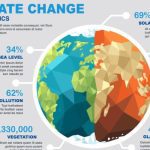According to a group of worldwide scientists, glaciers in the Hindu Kush region of the Himalaya mountains are melting at the quickest rate ever and might lose up to 80% of their ice by the end of this century if global warming is left unchecked.
According to the study, the melting of the glaciers will have an immediate effect on billions of people in Asia, resulting in floods, landslides, avalanches, and food shortages due to the flooding of agriculture.
A study by the International Centre for Integrated Mountain Development (ICIMOD), which has offices in Nepal and the United States, the melting of such a huge fresh water reserve could have indirect effects on distant nations like the United States and even the entire human race.
The study says the melting of the glaciers will directly impact billions of people in Asia — causing floods, landslides, avalanches and food shortages as farmland is inundated. Indirectly, the melting of such a vast reserve of fresh water could impact countries as far away as the United States, even the whole of humanity, according to the report by the Nepal-based International Centre for Integrated Mountain Development (ICIMOD).
The tallest mountains in the world, including Mount Everest, are found in the HKH region, which stretches for about 2,175 miles from Afghanistan to Myanmar. It is the source of water for 12 rivers that travel through 16 Asian countries and has the most ice on Earth outside of the two polar areas.
According to the report, the rivers supply fresh water to 1.65 billion people downstream and 240 million people living in the HKH region.
The melting of the glaciers would be disastrous for all of those people. According to the analysis, they would endure harsh weather occurrences and crop loss, which will cause widespread migration.
Deadly floods and avalanches have already increased in the Himalayan region over the last decade or so, and experts have connected the increased frequency and severity of the catastrophes to climate change and global warming.
The report notes that the Himalayan glaciers lost ice at a rate 65% faster between 2010 and 2019 than over the previous decade (2001-2010).
According to other research, Mount Everest’s glaciers have lost the equivalent of 2,000 years’ worth of ice in the last three decades. According to an ICIMOD report from 2019, the region’s Himalayan glaciers would lose at least one-third of their ice if average world temperature was confined to 1.5 degrees Celsius. However, as new technology and data became available over the last five years, the scientists discovered that the situation was worse than they had anticipated, according to Wester.
Global impact of the melting Himalayan glaciers
The impacts of the rapid glacial melt in the Himalayas will be felt around the world, Izabella Koziell, deputy director general of the ICIMOD, CBS News this week.
Scientists warned earlier this month at the Bonn Climate Change Conference about the alarming rate and size of global ice melt. Another study, released last year, predicted that by 2030, the Arctic might have periods of no ice at all, even if emissions are dramatically reduced.
They are urging for immediate action to curb global warming and preserve as much of the Himalayan ice mass as possible.














